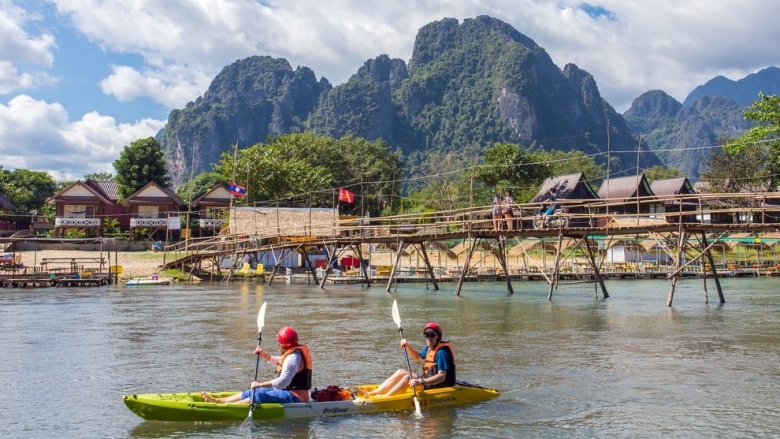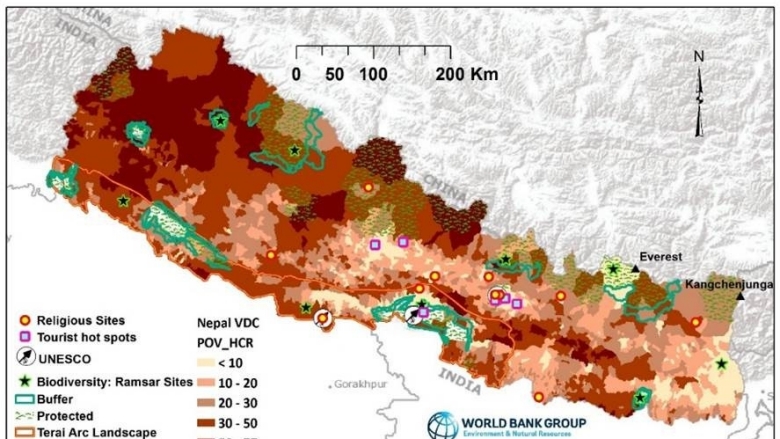A World Bank project in the Okavango Delta in northern Botswana is having an impact on the local economy while valuing wildlife at the same time, which are threatened by poaching and human-wildlife conflict. Over 150 young people received training in the tourism industry, nearly 100 of which are now gainfully employed in the field. By creating employment for local people in tourism they receive tangible economic benefits from the presence of wildlife alive, rather than dead.
The theme for this year’s International Day for Biological Diversity, celebrated May 22, is biodiversity and sustainable tourism to coincide with the observance of 2017 as the International Year of Sustainable Tourism for Development. The program in the Okavango is proof that promoting biodiversity and economic growth through tourism is one way to reach win-win solutions for people and wildlife.
Over the past two years, the World Bank has ramped up efforts and reengaged in tourism through new initiatives due to a growing demand from countries to alleviate poverty through jobs and growth, while also protecting wildlife and conserving ecosystems.
The tourism sector is expected to grow by 3.6% in 2017 and 3.9% per year globally over the next 10 years, according to the World Travel & Tourism Council. In 2016, travel and tourism contributed $7.6 trillion, or 10.2%, to total GDP, and the industry provided jobs to one in 10 people. In developing countries that depend on their natural capital assets, the figures can be equally as impressive:
- A recent economic assessment of tourism in Kenya shows travel and tourism contribute 10.5% of GDP, and provide nearly 550,000 jobs. It shows wildlife tourism “not only generates greater economic growth than other forms of tourism, but also has potential to do more to address poverty challenges” because wildlife tourism is more pro-poor, due to its closer linkages with the rural economy. Nature-based tourism has been identified in the country’s development blueprint, Vision 2030.
- In Tanzania, home of the Serengeti and Mount Kilimanjaro, nature-based tourism accounts for about 10% of GDP.
- In Namibia, 19% of all employment (direct and indirect) has been attributed to nature-based tourism.
- In the Maldives, tourism is the major source of government revenue that finances health and education.
"A big male elephant that tourists can come see over the course of its lifetime will generate more money and more benefit for people and the nation,” said Professor Lee White, Executive Secretary of Gabon’s National Parks Agency, in a recent interview with the Global Wildlife Program.
White stressed the importance of garnering support for the presence of wildlife from local communities. Creating jobs is one way to do that. “It’s one thing fighting cross-border poachers who are coming to poach in Gabon but if you are fighting with the villagers living around the parks you are going to lose.”
Client demand for nature-based tourism projects is growing
According to a recent portfolio review, there are nearly 25 World Bank projects, totaling over $800 million, with a nature-based tourism component or activity. An additional seven projects with investments of more than $115 million are in the pipeline.
“The review shows there are a lot of entry points and many small tourism components in projects, but most importantly it shows there are opportunities and the potential to do a lot more in nature-based tourism,” said World Bank Lead Economist Urvashi Narain.
Nature-based tourism can be a significant source of income for local communities and rural households, who often live in marginal areas with few pathways out of poverty. However, Narain said the relationship between nature-based tourism and poverty reduction is not always straightforward.
Local communities near protected areas sometimes carry a large share of the costs of protected areas in the form of restricted access to land and natural resources and crop damage due to raiding wildlife. The World Bank Group supports interventions that strengthen the linkages between nature-based tourism and poverty reduction.
“You have to include the poor people living near protected areas in order to protect wildlife,” said Narain.




